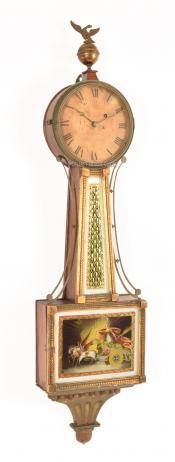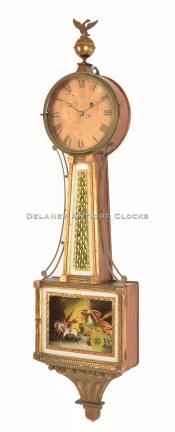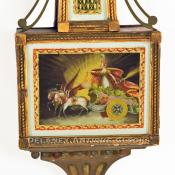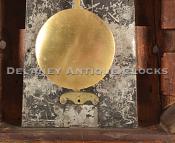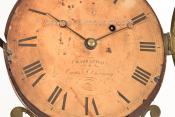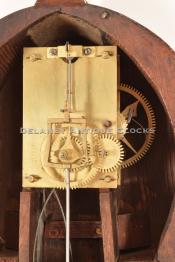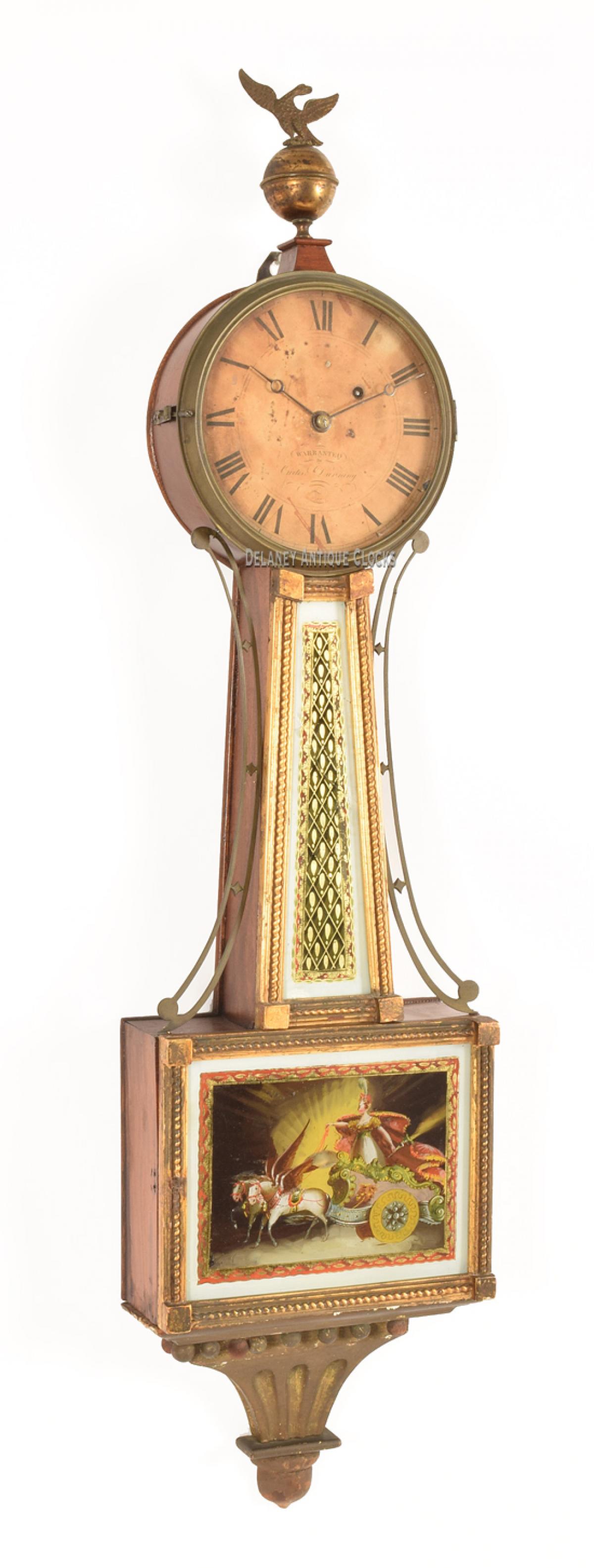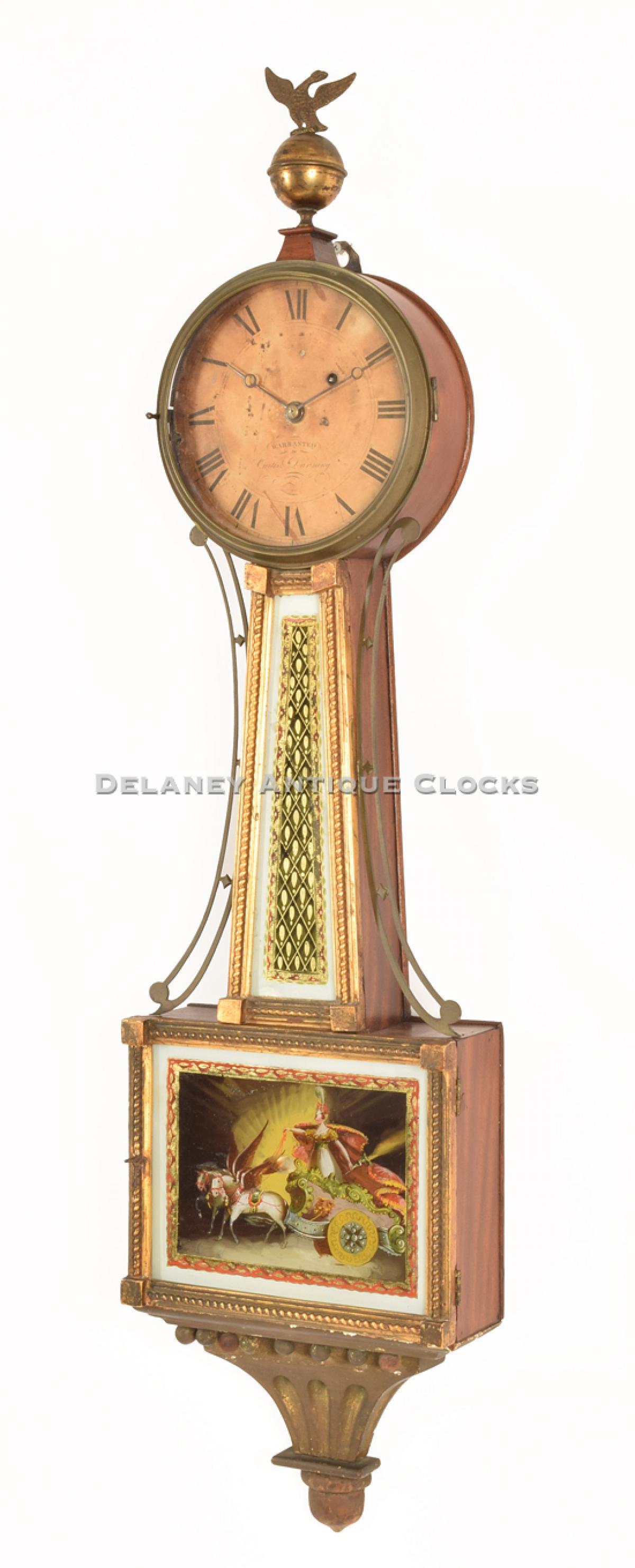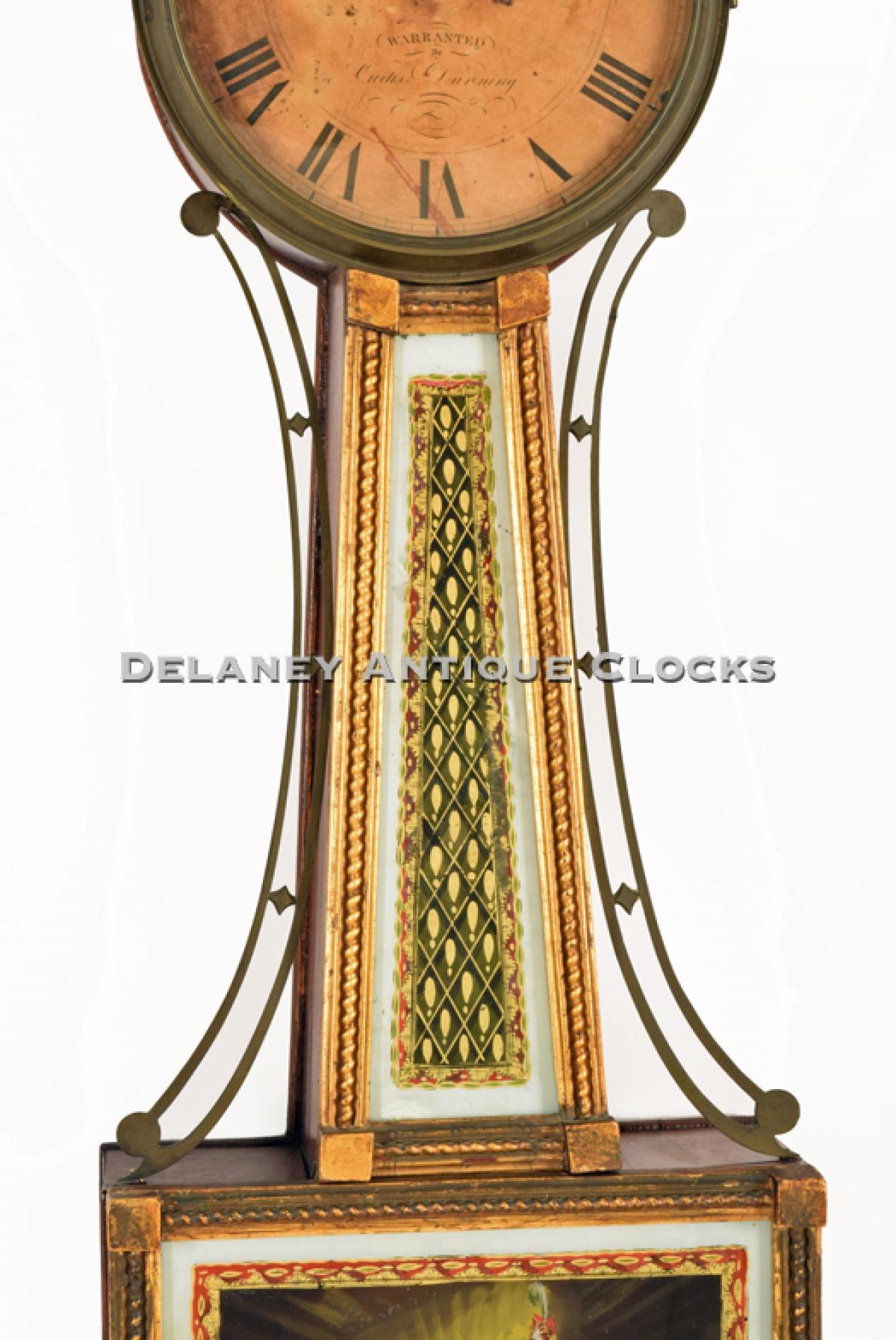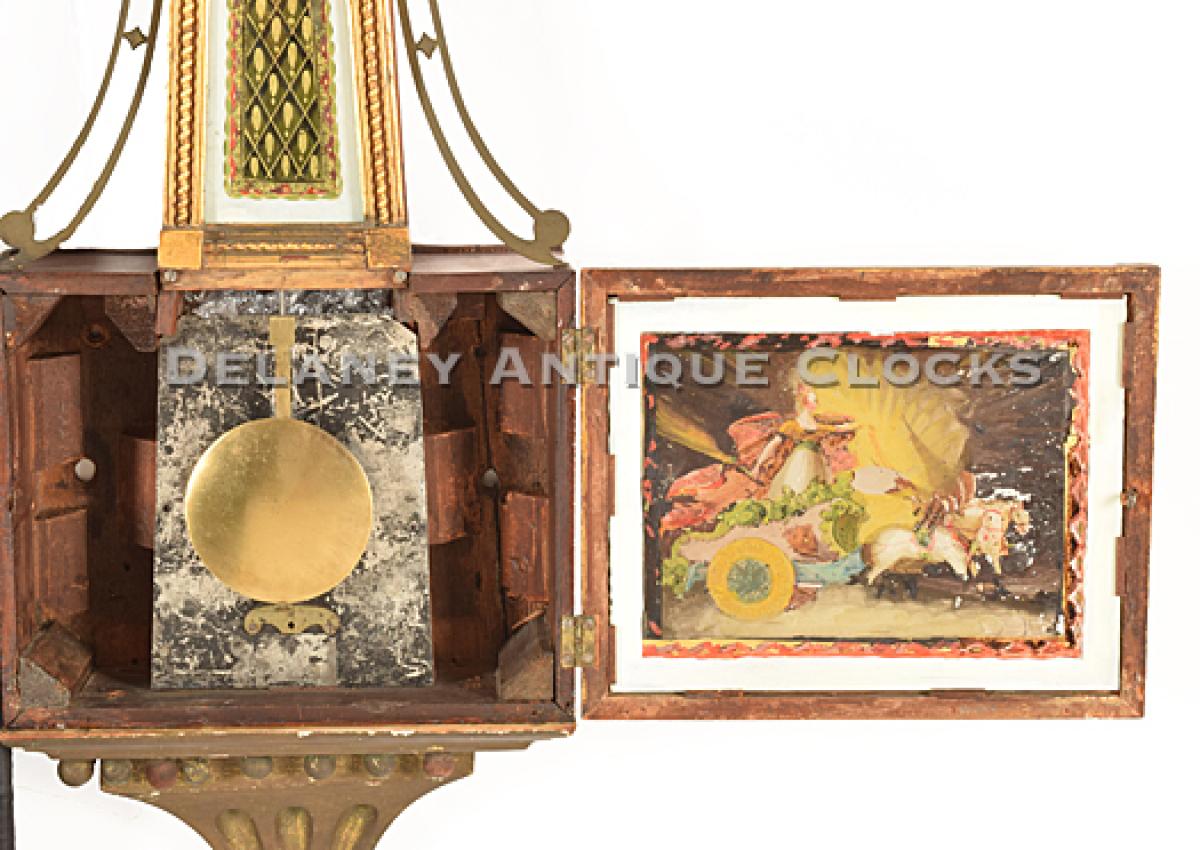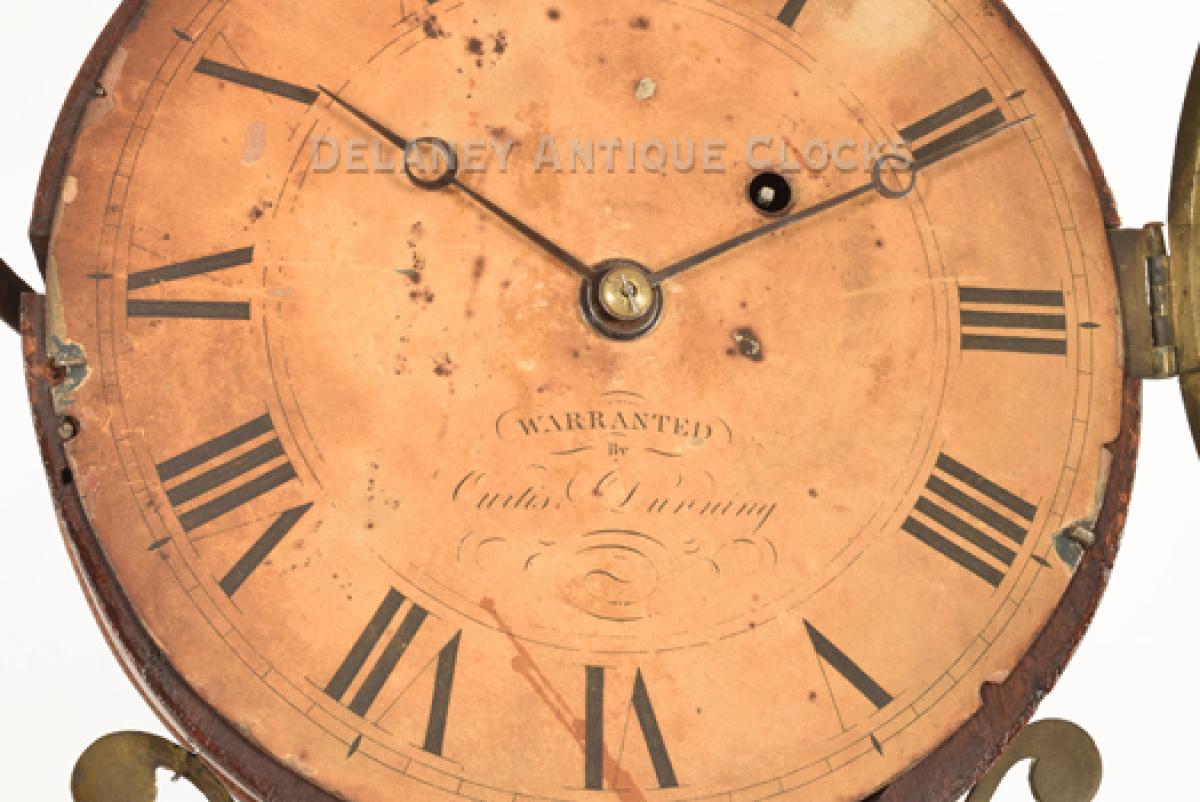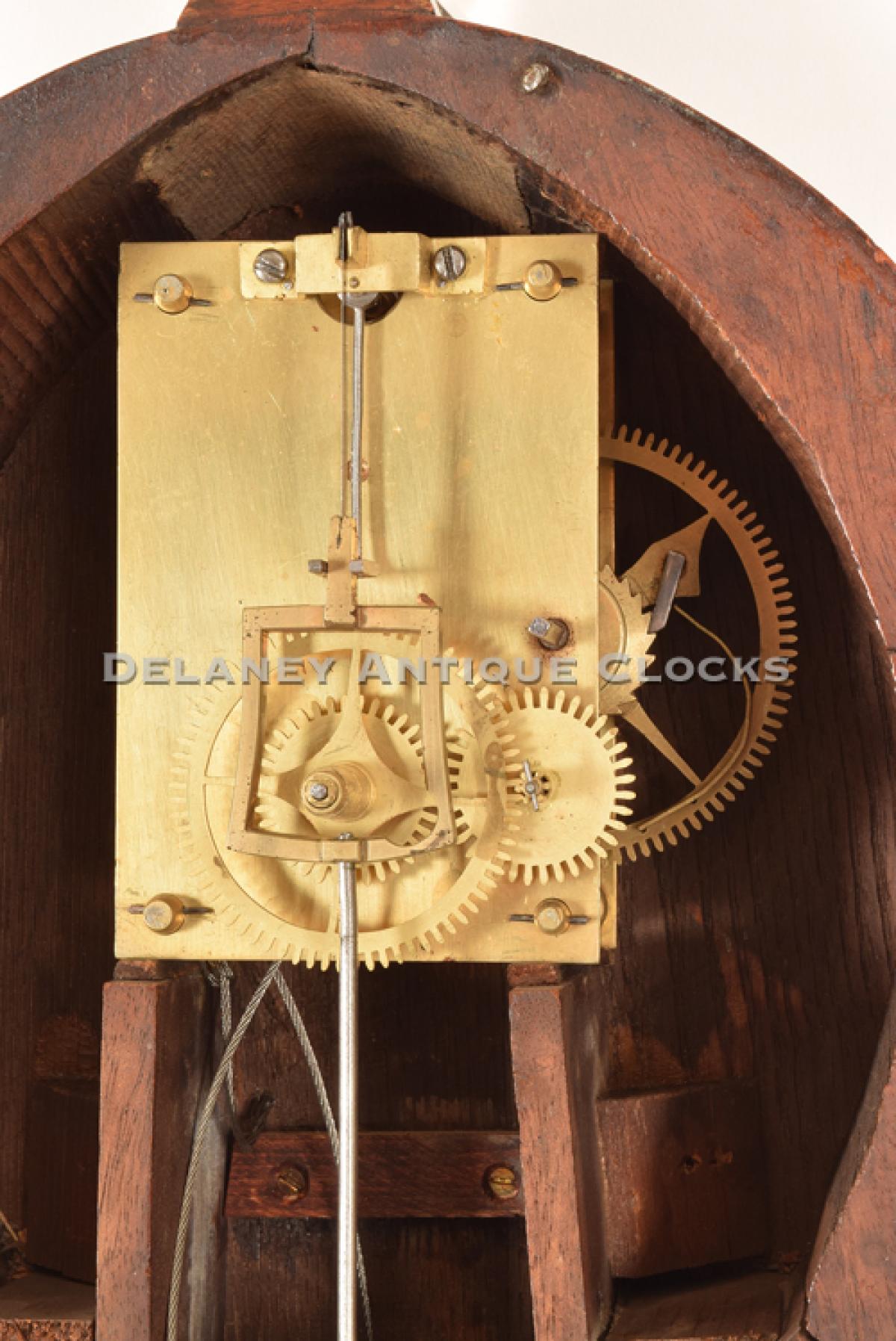Curtis & Dunning gilt framed wall timepiece or 'banjo' clock made in Burlington, Vermont. 217068.
This is a fine Federal Vermont timepiece or "Banjo clock" that was made in Burlington, Vermont, circa 1825 by Lemuel Curtis & Joseph N. Dunning.
This is an excellent example. The case is constructed in mahogany and features rope turnings which are applied to the gilded frames. The original gilding remains intact and is in very good original condition. It is remarkable that it has survived in such excellent shape. The frames are fitted with reverse-painted tablets. The tablets are original to this clock and are executed in excellent colors. The lower tablet depicts an allegorical scene. It is Aurora, the goddess of the dawn. In mythology, she renews herself daily and flies across the sky, announcing the sun's arrival. Two white-winged horses are pulling her chariot. This painted scene is framed in a bright red border. The decoration in the throat tablet is also framed in this same border. The center of the design features a decorative geometric pattern. Both tablets exhibit a very high level of artistic skill. The bezel, the pierced side arms, and the period eagle and ball finial, which surmounts this case, are brass. The bezel is fitted with a clear piece of glass and opens to a paper dial signed by the clockmakers.
This paper dial reads, "WARRANTED / By / Curtis & Dunning." It is wonderfully signed. This partnership used paper dials for several years, shortly after moving from Concord to Burlington, Vermont. Because these dials are paper, they often have discolored slightly, showing evidence of being approximately 190 years old. A small number of these survive today. This dial also shows some discoloration. The time track features large Roman-style hour numerals and a closed minute ring. Both steel hands have been lightly hand-filed.
Behind the dial is a brass movement that is weight driven and is designed to run for approximately eight days on a full wind. The movement is mounted to the back of the case with a single screw. The pendulum features a "Concord" style keystone and a brass-faced bob.
This clock was made circa 1825 and measured approximately 41 inches long overall. It remains in very good original condition.
The partnership of Curtis & Dunning was comprised of Lemuel Curtis and Joseph N. Dunning. It was formed in 1820 in Concord, Massachusetts, and moved to Burlington, Vermont, in 1821. Their shop in Burlington was located at the corner of Church and College Streets in the Thomas Hotel. They worked there in collaboration until 1832. While in Burlington, they worked as clockmakers, silversmiths, and jewelers. Over the last 50-plus years of business, we have bought and sold numerous examples of their work. They produced several timepiece forms, including banjo, tavern, girandole, lyre wall clocks, regulators, and even shelf models.
Lemuel Curtis was born in Roxbury, Massachusetts, on July 3rd, 1790. He was the son of Samuel and Sarah Partridge Curtis, whose sister married Aaron Willard. He died in New York on June 17th, 1857. Lemuel had two brothers who were also involved with clockmaking. He was the nephew of Aaron Willard and probably trained with Simon Willard in Roxbury. In 1811, Lemuel advertised that he was working alone in Concord. Lemuel was a very skilled clockmaker and the inventor of the Girandole form.
Joseph Nye Dunning was born in Brunswick, Maine, on January 2nd, 1795, and died in Burlington, Vermont, on December 14th, 1841. He was first a journeyman working for Curtis in Concord before their partnership in 1820. After this arrangement dissolved in 1832, he continued to work independently and died bankrupt at age 46.
For an in-depth description of their clockmaking activity, please read Paul Foley's book, "Willard's Patent Time Pieces."


